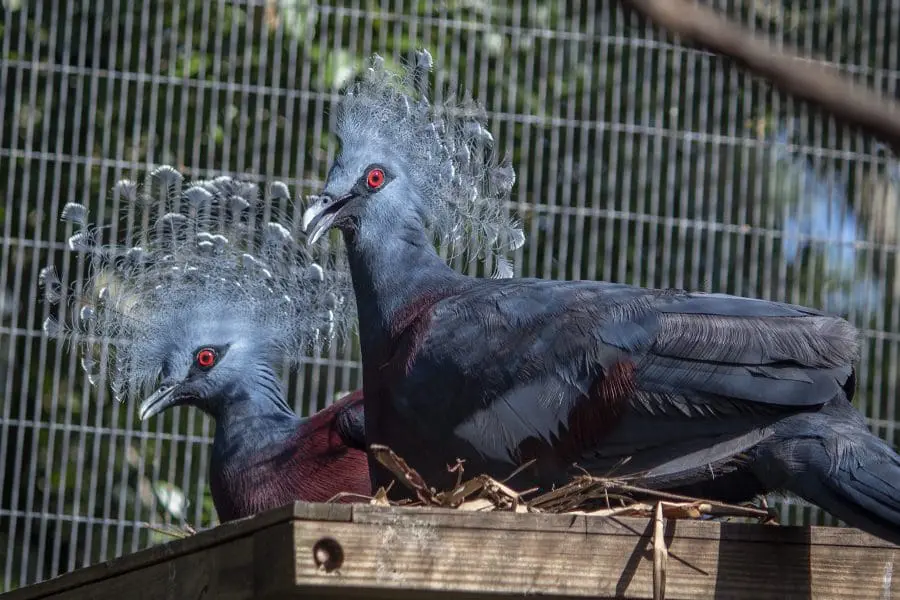

Pidgey and Pidgeot can often be spotted close to each other!
If you’ve visited the Zoo, you’ve likely met a lot of our more than 900 animal residents. Some animals are easy to spot, but others are often not as easy to see because of their habitat set up, their personalities or their sleep cycles among other things. We wanted to start a “Meet the Animals” section of our blog to introduce you to some of the residents that you may (or may not have) met yet!
Take a stroll through the lorikeet aviary in our Lands of Change: Australia and Beyond section of the Zoo and you’re likely to admire the ornate plumage of our Victoria crowned pigeons. Six-year-old female, Pidgey, and 8-year-old male, Pidgeot, have names that are just as unique as their looks! They’re named after bird creatures from the media franchise Pokémon.
Victoria crowned pigeons tend to spend a lot of their time during the day on the ground, where they would naturally be foraging for food. At night, our pair usually goes up onto taller perching in their habitat to “roost” or sleep.
When you visit the aviary, you’re most likely to find them walking around all areas of their habitat, often together. This pair loves to sunbathe – you may even be able to spot them doing so! Look for them laying on the ground with their wings spread out.
“Pidgey and Pidgeot enjoy investigating enrichment and often aren’t far from their feeding platforms,” said Kristen Gagnon, the Land of Change Area Supervisor. They do not often interact with their dozens of roommates but will join the lorikeet flock for meals!
“They don’t mind the other birds, but a few of the bolder lorikeets will occasionally try to ride around on their tail feathers, which doesn’t amuse the pigeons,” said Kristen.
This bonded pair spends most of their time close to each other. Although we have observed them building nests and Pidgey laying eggs, the eggs were not fertile.
Both of our Victoria crowned pigeons are curious and enjoy interacting with keepers. “We have used positive reinforcement training to encourage them to stand on a scale for voluntary weights,” said Kristen. In addition, Pidgey and Pidgeot have been trained to allow keepers to palpitate their breast muscles, which allows staff to feel and evaluate their body condition. “Both of these behaviors allow us to better assess their health,” said Kristen.
Victoria crowned pigeons are frugivores, meaning they mostly eat fallen fruits and some insects. Pidgey and Pidgeot eat a variety of produce, mealworms and a bird pellet.
On your next visit to the Zoo, see if you can spot these beautiful birds!
Brevard Zoo is an independent, not-for-profit organization that receives no recurring government funding for our operating costs. Your generous support enables us to continue to serve our community and continue our vital animal wellness, education and conservation programs.




